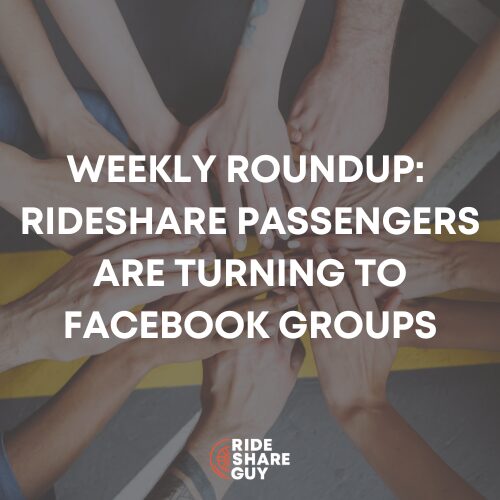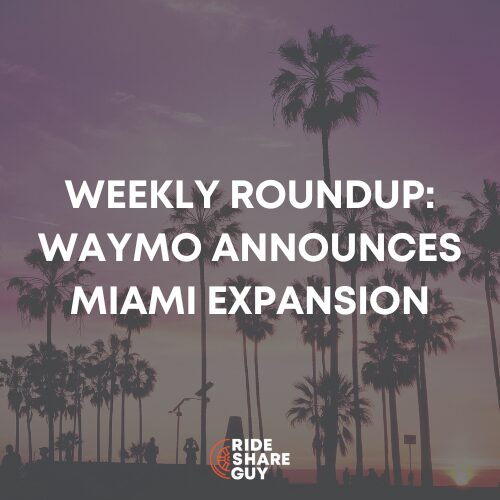President Biden is aiming at the rideshare and delivery industry with changes to the Department of Labor laws concerning independent contractor positions.
With drivers continuing with low wages and striking, the rideshare economy is off to a newsworthy start for 2024.
Join RSG Contributor Paula Lemar as she breaks down the top headlines in this week’s rideshare news.
Biden’s Labor Department Takes Aim At Uber And Doordash With New Rule Aimed To Cut Down On Number Of ‘Independent Contractors’
Topic Originally Appeared On Fortune
Summary
The Biden administration enacted a new labor rule Tuesday that aims to prevent the misclassification of workers as “independent contractors,” a step that could bolster both legal protections and compensation for millions in the U.S. workforce.

Major app-based platforms, including Uber, Lyft, and DoorDash, expressed confidence that the new rule would not force them to reclassify their gig drivers. But business groups warned the rule creates uncertainty for employers and much depends on how the Labor Department decides to enforce it.
The Labor Department rule, which the administration proposed 15 months ago, replaces a Trump-era standard that narrowed the criteria for classifying employees as contractors. Such workers are not guaranteed minimum wages or benefits, such as health coverage and paid sick days.
My Take
Note that this rule will not take effect until March, so for now, it’s unlikely rideshare drivers and delivery couriers will notice any big impacts yet.
Drivers weighed in when classification was under fire in California a few years ago. It was pretty split between drivers who wanted more protections and others who feared losing flexibility if no longer labeled as independent contractors, despite not being able to set their own earnings and other perks of being independent.
If you want to hear what Harry and Sergio have to say about this topic, suggest it for their new combative YouTube debate show called Crossfire.
For immediate insight into Sergio’s opinion on this topic, check out his article Here’s What Could Happen if Uber and Lyft Drivers Became Employees.
Lyft’s View on 2024 Department of Labor Rule
Topic Originally Appeared On Lyft
Summary
The Department of Labor released a final rule interpreting the independent contractor test under the Fair Labor Standards Act (FLSA), which will go into effect on March 11, 2024, unless there is a clearly stated delay in applicability.
While we are still reviewing the new final rule, our initial view is there is no immediate or direct impact on Lyft’s business at this time.
The Final 2024 Department of Labor Rule:
- Does not reclassify Lyft drivers as employees.
- Does not force Lyft to change our business model.
- This is similar to the approach the Obama Administration used to determine employee status. This approach previously applied to app-based companies, including Lyft, and did not result in the reclassification of drivers.
The new rule emphasizes a broader approach to determining if a worker is an employee or independent contractor under the FLSA.
The rule’s independent contractor test considers six factors, with specific examples throughout for each factor, and finds that no one-factor controls – each can be weighted differently depending on the circumstances.
While the intent of the rule was to provide clarity, this new guidance creates additional complexities and ambiguities for companies and courts alike across the country.
My Take
It sounds like Lyft isn’t too worried about the new rule and has no intention of changing its business model or how it treats its drivers.
It’s not surprising, really. These rules and changes try but miss the mark on a lot of things. As Lyft says in their article, the majority of drivers on their platform work less than 20 hours a week, and as I stated in the other article, the majority of drivers value their flexibility.
Being relabeled as an employee tends to take away that kind of flexibility and freedom that most drivers value above almost anything else. Not to say that these platforms couldn’t maintain flexibility while also affording their drivers the perks of being employees, but that’s usually what the platforms threaten first.
A Driver Made Over $110,000 From Uber And Lyft In 2022 But Took Home Only $14,000. After 6 Years On The Job, He’s Working Toward A Degree And A New Career.
Topic Originally Appeared On Business Insider
Summary
Michael, a ride-hailing driver in his late 30s, made more than $110,000 in gross earnings driving for Uber and Lyft in 2022. But after commissions paid to the ride-hailing companies, taxes, and other expenses, he ended up with net earnings of just $14,000.

Michael, who’s based in New Jersey and asked to use only his first name for fear of professional repercussions, shared tax documents and screenshots of recent rides that disclose just how little he took home in 2022.
Expenses included buying a new engine, having numerous car repairs, and driving amid elevated gas prices. He said he’d noticed ride-hailing driving had become increasingly less profitable after more than 17,000 rides across six years.
As a driver with a spinal injury who takes care of two young kids, he said he’d struggled to make ends meet for himself and his family. He’s soon set to enroll in a bachelor’s degree program funded entirely by Uber, but in the meantime, driving is one of his only options to pull in cash.
My Take
The change over the years in wages from platforms is staggering. Personally, I don’t know that I will drive for rideshare again because it’s just not worth it anymore. Most especially since I now live far enough outside of the metro area that rideshare doesn’t even exist in the town I live in. I would have to deadhead 30 miles before I could even go online.
But I didn’t realize the wage changes could affect someone this drastically. And we all know this driver is not the only one with extenuating circumstances that prevent him from getting a “standard” job.
Several people in this country rely heavily on earnings from rideshare driving and delivering and just have to keep powering through until they earn enough to offset the cost of doing business and to earn enough to pay the bills.
Very tragic that so many are suffering from low wages just so these companies can line their own pockets.
Rideshare Drivers Strike At MSP Airport For Better Pay
Topic Originally Appeared On Star Tribune
Summary
Some metro area Uber and Lyft drivers shut off their apps Thursday, and about 30 picketed at the Minneapolis-St. Paul International Airport for two hours in the evening.
The drivers called the one-day strike as they continued to advocate for higher pay and more predictable earnings. Several longtime drivers said their cut of fares has steadily dropped.
Ibrahima Kante has been driving for eight years and made more than 25,000 trips in the Twin Cities, he said, showing a screenshot of his history. Pay started off good, but it can no longer support his family.
“I’ve got six kids I need to take care of,” Kante said.
Starting about 5 p.m. Thursday, a group of about 30 drivers marched on a small sidewalk across a tall median from the main departure road at Terminal One. Other drivers zipped by after dropping off passengers, seeming to pay little attention to the small demonstration.
My Take
Speaking of low wages. Drivers are striking. We saw other markets in recent weeks doing the same. Drivers want better pay.
These platforms have stripped drivers’ pay over and over and over again to the point where they are literally earning pennies compared to when these platforms first came to the forefront.
Ever since the platforms did away with giving drivers a percentage of what passengers paid, drivers have been taking the brunt of it while the companies take the extra money they are charging the passengers straight to the bank.
If there is one thing I could hope for, it’s that Uber, Lyft, and all the others will open their pockets and pay their drivers better. They seriously would be nothing without their drivers, who risk everything for a few bucks per ride.
RSG in the News This Week
Read more trending topics in the news this week:
Must Listen Or Watch RSG Content
Here are this week’s featured podcast episode and YouTube videos:
- RSG251: How Vugo is Helping Fleet Owners Earn More With In Car Advertising
- Can Drivers Really Earn $32 Per Hour On Uber? | Driver Diary with Sergio
- Cash or Trash: Accept Or Deny The Ride?!
- Can Drivers Afford to Take $3 Trips In 2024? | Driver Diary with Sergio
- Make sure you Subscribe so you don’t miss out on future conversations and interviews!





